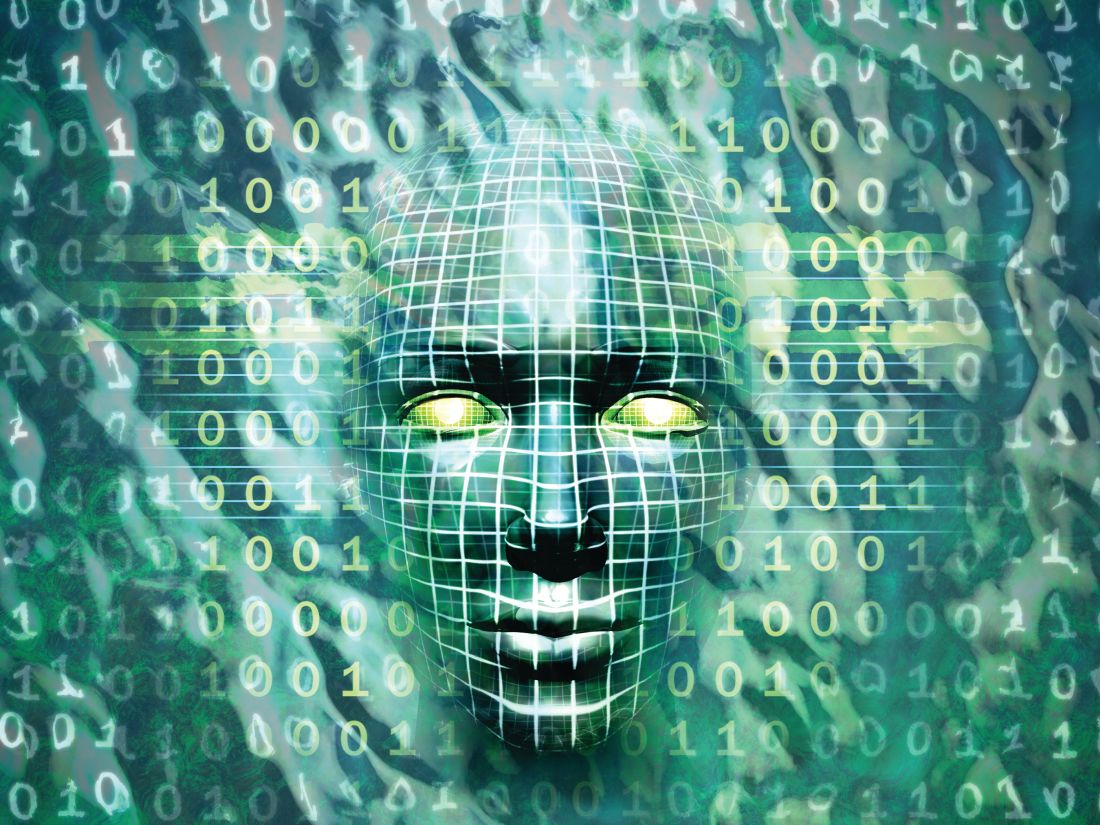User login
There is a good chance that your car is equipped with a backup camera. It also may have sensors that alert you when there is another vehicle in one of your blind spots. These wonders of modern technology simply are vision enhancers much like an x-ray or an ultrasound. The sensors merely collect visual data, but the decision of what should be done with this additional information is up to you, just as you decide how to respond to your patient’s lab work and imaging studies.
If you have more disposable income than I do, you may have a vehicle that not only gathers information but also makes decisions based on what it senses by slowing down, applying the brakes, or adjusting the steering. My friends who own these semi-autonomous cars generally have given these control systems positive grades once they have experienced a few events in which the vehicle took over in what it considered a dangerous situation. However, even my friends who are fans of their semi-autonomous cars are uncomfortable about the widespread introduction of fully autonomous vehicles.
The practice of medicine is riding the crest of this same wave of artificial intelligence that promises, or some might say threatens, to remove humans from the driver’s seat (“A.I. Shows Promise Assisting Physicians,” by Cade Metz, The New York Times, Feb. 11, 2019). As reported in the New York Times, a team of physicians has created a system capable of making diagnoses based on a “neural network” that uses complex computer algorithms to learn by analyzing extremely large amounts of data. Once this system had been “taught” to identify certain medical conditions in EMRs, the team tasked the system with analyzing the records of nearly 600,000 patients at a women and children’s hospital in southern China. The investigators claim that the system was able to diagnose asthma with more than 90% accuracy, while physicians can diagnose with an accuracy of 80%-94%, and the system diagnosed gastrointestinal disease with 87% accuracy, well within the physicians’ accuracy range of 82%-90%.
Does this apparent success for A.I. mean that not only will you be vacating your place behind the wheel of your car, but also taking down your shingle and hanging up your stethoscope? Before you rush out and sign up for a federally-funded retraining program, you should remember that this study was done in China, where the privacy laws are somewhat skimpy and the data more voluminous by several scales of magnitude than here. Replicating their results and However, this report should serve as wake-up call to those of you who believe that making diagnoses is at the core of what makes you a physician. If sorting through pages of data to arrive at an explanation for your patients’ complaints is the intellectual challenge that keeps the practice of medicine fresh and exciting, you may want to start looking for other sources of mental stimulation.
A.I. isn’t going to replace the primary care physician. There still will need to be someone available at the initial point of contact who can do a physical exam, take, or at least review, the patient’s history, and then order the lab work and imaging studies that the A.I. system will use to make the diagnosis. In other words, the physician will be primarily responsible for data collection. You may feel that you are almost there already.
Will there be new roles for primary care physicians once A.I. systems are making the diagnoses? It is hard to imagine a fully autonomous health care system in which physicians completely disappear. But, now is the time to think seriously about how we are going to reinvent ourselves to adapt to the inevitable changes and continue as an (or could be "the") essential human element in an increasingly automated system.
Dr. Wilkoff practiced primary care pediatrics in Brunswick, Maine for nearly 40 years. He has authored several books on behavioral pediatrics, including “How to Say No to Your Toddler.” Email him at [email protected].
There is a good chance that your car is equipped with a backup camera. It also may have sensors that alert you when there is another vehicle in one of your blind spots. These wonders of modern technology simply are vision enhancers much like an x-ray or an ultrasound. The sensors merely collect visual data, but the decision of what should be done with this additional information is up to you, just as you decide how to respond to your patient’s lab work and imaging studies.
If you have more disposable income than I do, you may have a vehicle that not only gathers information but also makes decisions based on what it senses by slowing down, applying the brakes, or adjusting the steering. My friends who own these semi-autonomous cars generally have given these control systems positive grades once they have experienced a few events in which the vehicle took over in what it considered a dangerous situation. However, even my friends who are fans of their semi-autonomous cars are uncomfortable about the widespread introduction of fully autonomous vehicles.
The practice of medicine is riding the crest of this same wave of artificial intelligence that promises, or some might say threatens, to remove humans from the driver’s seat (“A.I. Shows Promise Assisting Physicians,” by Cade Metz, The New York Times, Feb. 11, 2019). As reported in the New York Times, a team of physicians has created a system capable of making diagnoses based on a “neural network” that uses complex computer algorithms to learn by analyzing extremely large amounts of data. Once this system had been “taught” to identify certain medical conditions in EMRs, the team tasked the system with analyzing the records of nearly 600,000 patients at a women and children’s hospital in southern China. The investigators claim that the system was able to diagnose asthma with more than 90% accuracy, while physicians can diagnose with an accuracy of 80%-94%, and the system diagnosed gastrointestinal disease with 87% accuracy, well within the physicians’ accuracy range of 82%-90%.
Does this apparent success for A.I. mean that not only will you be vacating your place behind the wheel of your car, but also taking down your shingle and hanging up your stethoscope? Before you rush out and sign up for a federally-funded retraining program, you should remember that this study was done in China, where the privacy laws are somewhat skimpy and the data more voluminous by several scales of magnitude than here. Replicating their results and However, this report should serve as wake-up call to those of you who believe that making diagnoses is at the core of what makes you a physician. If sorting through pages of data to arrive at an explanation for your patients’ complaints is the intellectual challenge that keeps the practice of medicine fresh and exciting, you may want to start looking for other sources of mental stimulation.
A.I. isn’t going to replace the primary care physician. There still will need to be someone available at the initial point of contact who can do a physical exam, take, or at least review, the patient’s history, and then order the lab work and imaging studies that the A.I. system will use to make the diagnosis. In other words, the physician will be primarily responsible for data collection. You may feel that you are almost there already.
Will there be new roles for primary care physicians once A.I. systems are making the diagnoses? It is hard to imagine a fully autonomous health care system in which physicians completely disappear. But, now is the time to think seriously about how we are going to reinvent ourselves to adapt to the inevitable changes and continue as an (or could be "the") essential human element in an increasingly automated system.
Dr. Wilkoff practiced primary care pediatrics in Brunswick, Maine for nearly 40 years. He has authored several books on behavioral pediatrics, including “How to Say No to Your Toddler.” Email him at [email protected].
There is a good chance that your car is equipped with a backup camera. It also may have sensors that alert you when there is another vehicle in one of your blind spots. These wonders of modern technology simply are vision enhancers much like an x-ray or an ultrasound. The sensors merely collect visual data, but the decision of what should be done with this additional information is up to you, just as you decide how to respond to your patient’s lab work and imaging studies.
If you have more disposable income than I do, you may have a vehicle that not only gathers information but also makes decisions based on what it senses by slowing down, applying the brakes, or adjusting the steering. My friends who own these semi-autonomous cars generally have given these control systems positive grades once they have experienced a few events in which the vehicle took over in what it considered a dangerous situation. However, even my friends who are fans of their semi-autonomous cars are uncomfortable about the widespread introduction of fully autonomous vehicles.
The practice of medicine is riding the crest of this same wave of artificial intelligence that promises, or some might say threatens, to remove humans from the driver’s seat (“A.I. Shows Promise Assisting Physicians,” by Cade Metz, The New York Times, Feb. 11, 2019). As reported in the New York Times, a team of physicians has created a system capable of making diagnoses based on a “neural network” that uses complex computer algorithms to learn by analyzing extremely large amounts of data. Once this system had been “taught” to identify certain medical conditions in EMRs, the team tasked the system with analyzing the records of nearly 600,000 patients at a women and children’s hospital in southern China. The investigators claim that the system was able to diagnose asthma with more than 90% accuracy, while physicians can diagnose with an accuracy of 80%-94%, and the system diagnosed gastrointestinal disease with 87% accuracy, well within the physicians’ accuracy range of 82%-90%.
Does this apparent success for A.I. mean that not only will you be vacating your place behind the wheel of your car, but also taking down your shingle and hanging up your stethoscope? Before you rush out and sign up for a federally-funded retraining program, you should remember that this study was done in China, where the privacy laws are somewhat skimpy and the data more voluminous by several scales of magnitude than here. Replicating their results and However, this report should serve as wake-up call to those of you who believe that making diagnoses is at the core of what makes you a physician. If sorting through pages of data to arrive at an explanation for your patients’ complaints is the intellectual challenge that keeps the practice of medicine fresh and exciting, you may want to start looking for other sources of mental stimulation.
A.I. isn’t going to replace the primary care physician. There still will need to be someone available at the initial point of contact who can do a physical exam, take, or at least review, the patient’s history, and then order the lab work and imaging studies that the A.I. system will use to make the diagnosis. In other words, the physician will be primarily responsible for data collection. You may feel that you are almost there already.
Will there be new roles for primary care physicians once A.I. systems are making the diagnoses? It is hard to imagine a fully autonomous health care system in which physicians completely disappear. But, now is the time to think seriously about how we are going to reinvent ourselves to adapt to the inevitable changes and continue as an (or could be "the") essential human element in an increasingly automated system.
Dr. Wilkoff practiced primary care pediatrics in Brunswick, Maine for nearly 40 years. He has authored several books on behavioral pediatrics, including “How to Say No to Your Toddler.” Email him at [email protected].


